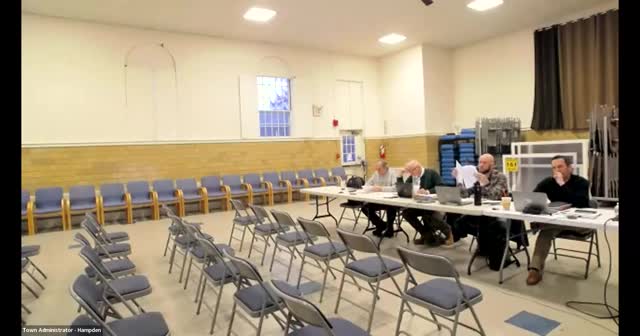Hampton School Committee debates weighted voting and regional school agreement
February 21, 2025 | Town of Hampden, Hampden County, Massachusetts
This article was created by AI summarizing key points discussed. AI makes mistakes, so for full details and context, please refer to the video of the full meeting. Please report any errors so we can fix them. Report an error »

In a recent meeting of the Hampden Selectboard, key discussions unfolded regarding the future of the Hampden Mobile Hill Regional School District and the implications of a proposed amended agreement. The atmosphere was charged with a sense of urgency as board members navigated through the complexities of educational governance and community representation.
The chairperson of the school committee presented updates on the agreement, which aims to clarify the educational structure for students in grades 6 through 12. Under the proposed changes, students from Hampden and Wilbraham would attend either Wilbraham Middle School or Minnechaug Regional High School, a shift that seeks to streamline educational pathways within the district. This adjustment is part of a broader effort to enhance educational access and equity for local students.
However, the meeting also highlighted contentious issues surrounding the voting structure within the school committee. A significant point of debate was the requirement for weighted voting, which mandates that each member's vote reflects the population size of their respective towns. This system, while intended to uphold the principle of "one person, one vote," has raised concerns among board members about its fairness and practicality. For instance, members from Hampden would have a voting weight of 0.85, while their counterparts from Wilbraham would have a different weight, complicating decision-making processes.
Board members expressed frustration over the necessity of this weighted voting system, questioning its alignment with existing practices and the potential for legal challenges. They noted that the current structure, which already accounts for population disparities through a 5 to 2 voting ratio, should suffice without further complicating the governance framework.
As discussions progressed, the board members sought clarity on the legal basis for these requirements, emphasizing the need for transparency and understanding of the regulations imposed by the Department of Elementary and Secondary Education. The meeting underscored the ongoing challenges faced by regional school districts in balancing representation and governance, leaving many questions unanswered about the future of educational policy in Hampden.
In conclusion, the Hampden Selectboard's meeting illuminated critical issues affecting local education and governance. As the board continues to grapple with these complexities, the community watches closely, eager for resolutions that will shape the educational landscape for years to come.
The chairperson of the school committee presented updates on the agreement, which aims to clarify the educational structure for students in grades 6 through 12. Under the proposed changes, students from Hampden and Wilbraham would attend either Wilbraham Middle School or Minnechaug Regional High School, a shift that seeks to streamline educational pathways within the district. This adjustment is part of a broader effort to enhance educational access and equity for local students.
However, the meeting also highlighted contentious issues surrounding the voting structure within the school committee. A significant point of debate was the requirement for weighted voting, which mandates that each member's vote reflects the population size of their respective towns. This system, while intended to uphold the principle of "one person, one vote," has raised concerns among board members about its fairness and practicality. For instance, members from Hampden would have a voting weight of 0.85, while their counterparts from Wilbraham would have a different weight, complicating decision-making processes.
Board members expressed frustration over the necessity of this weighted voting system, questioning its alignment with existing practices and the potential for legal challenges. They noted that the current structure, which already accounts for population disparities through a 5 to 2 voting ratio, should suffice without further complicating the governance framework.
As discussions progressed, the board members sought clarity on the legal basis for these requirements, emphasizing the need for transparency and understanding of the regulations imposed by the Department of Elementary and Secondary Education. The meeting underscored the ongoing challenges faced by regional school districts in balancing representation and governance, leaving many questions unanswered about the future of educational policy in Hampden.
In conclusion, the Hampden Selectboard's meeting illuminated critical issues affecting local education and governance. As the board continues to grapple with these complexities, the community watches closely, eager for resolutions that will shape the educational landscape for years to come.
View full meeting
This article is based on a recent meeting—watch the full video and explore the complete transcript for deeper insights into the discussion.
View full meeting
